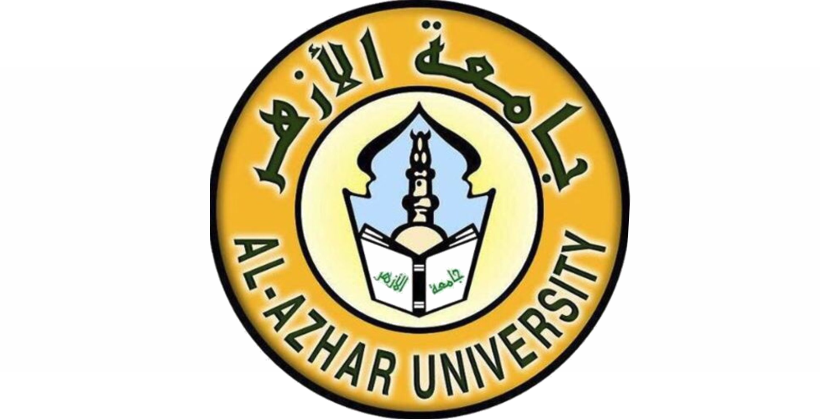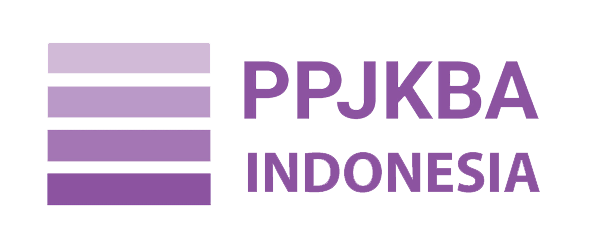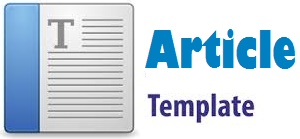Effectiveness of Quantum Learning-Based Speech Skills Learning Using Flip Book Media
DOI:
https://doi.org/10.35719/arkhas.v5i1.2249Keywords:
speaking skills, flip book media, quantum learningAbstract
Mastery of Arabic speaking skills (maharah kalam) poses a significant challenge for students, particularly in the context of primary education where exposure to the language is limited. Previous research has examined the use of Quantum Learning and digital media in language learning, but few have examined the impact of the combination of the two methods, particularly in teaching Arabic speaking skills. This study aims to examine the effectiveness of Quantum Learning-based maharah kalam learning using flipbook media at MI Al-Ishlah Palembang. Using a mixed method approach, this study combines quantitative data obtained from pre-test and post-test scores with qualitative interviews and observations. The data analysis process included descriptive statistics, t-test, and thematic analysis to evaluate both the effectiveness of the method and the student experience. The results showed a significant improvement in students' speaking skills, with an average increase from 72.92 in the pre-test to 89.17 in the post-test. In addition, students reported higher levels of engagement and motivation during learning. This study concludes that the integration of Quantum Learning and flipbook media is an effective strategy in improving Arabic speaking skills and can provide a more dynamic and interesting learning environment for students.
References
Azizah, N., Nurdianzah, E., Wijaya, M. M., Azami, T., & Rohman, A. (2023). Religious Moderation in The Industrial Era 4.0: Deradicalization Through The Development of Intellectual Traditions at Fadhlul Fadhlan Islamic Boarding School Semarang. Jurnal Pendidikan Agama Islam, 20(2), 233–246. https://doi.org/10.14421/jpai.v20i2.7771
Blackham, A. (2024). Mixed methods research. In Research Methods in Labour Law: A Handbook (pp. 399–414). Edward Elgar Publishing Ltd. https://doi.org/10.4337/9781803925257.00037
Bruzd-Olszewska, W., Frankowiak, A., & Wojtkiewicz, J. (2020). Genre repertoire for professional communication in the oxford for careers course books: English for nursing 1 and 2. Polish Annals of Medicine, 27(1), 73–77. https://doi.org/10.29089/2019.19.00089
DePorter, B., & Hernacki, M. (2000). Quantum learning. PT Mizan Publika.
Desriwita, E., Ahmad Lahmi, & Riki Saputra. (2022). Learning Arabic as an L2. WARAQAT : Jurnal Ilmu-Ilmu Keislaman, 7(1), 40–54. https://doi.org/10.51590/waraqat.v7i1.241
Haironi, A., Hermawati, T., & Umar, S. (2021). Metode Pembelajaran Berbasis Qantum Learning Di Pondok Pesantren Yatim Dan Dhuafa Ar. Fakhruddin Prambanan. In At Turots: Jurnal Pendidikan Islam (Vol. 3, Issue 1, pp. 117–128). Sekolah Tinggi Ilmu Tarbiyah Madani Yogyakarta. https://doi.org/10.51468/at-turots.v3i1.65
Haris, A., & Munir, M. M. (2021). The Use of Technology in Arabic Language Teaching. Journal of Arabic Language Teaching, 1(1), 67–80. https://doi.org/10.35719/arkhas.v1i1.1278
Hidayah, N. (2015). Al-Ittijâhât Al-Hadîtsah Fî Ta’lîm Al-Lughah Al-‘Arabiyyah Bi Al-Ma’had As-Salafi (Dirâsah Al-Hâlah Bimadrasah Al-Mu’allimîn Wa Al-Mu’allimât Sabilul Hasanah Banyuasin). 128–154.
Hidayah, N. (2019). Taṣmīm Ta‘līm Mahārat al-Kitābah ‘alā Ḍaw’ al-Madkhal al-Binā’ī li-ṭ-Ṭālibah bi-Qism Ta‘līm al-Lughah al-‘Arabīyah. Al-Tarbiyah, 07, 23–24..
Hidayah, N. (2021). The Contextualization of the Verse of the Qur’an in Learning Arabic and Its Effect on the Literation Ability of UIN Raden Fatah Students. Review of International Geographical Education Online, 11(7).
Hidayah, N., Mukmin, M., & Marfuah, S. (2023). The Correlation between Arabic Learning Motivation and Arabic Language Competence of Education Study Program Students in Post- COVID-19 Pandemic. Jurnal Al Bayan: Jurnal Jurusan Pendidikan Bahasa Arab, 15(2), 380. https://doi.org/10.24042/albayan.v15i2.17453
Hidayah, N., Mukmin, M., & Rahma, M. (2021). Kecerdasan Dan Kepribadian Siswa di SMP IT Fathona Palembang Dan Pengaruhnya Terhadap Kemampuan Berbicara. Taqdir, 7(1), 115–130. https://doi.org/10.19109/taqdir.v7i1.8455
Imron, K., Irmansyah, I., Nurhusna, N., Maimunah, I., & Hajib, Z. A. (2023). A New Model of Kalam Material Through Cybernetic Approach: Development Stages and The Influence Towards Speaking Skill of Students. Jurnal Al Bayan: Jurnal Jurusan Pendidikan Bahasa Arab, 15(1), 207–223. https://doi.org/10.24042/albayan.v15i1.16199
Irmansyah, I. (2019). Ta’tsīr at-Ta’līm al-Maydani wa Asâlīb at-Ta’allum ‘alâ Istīâb al-Mufrodât at-Talâmīdz fī al-Fashli ar-Râbi’ wa as-Sâdis bil-Madrasah al-Ibtidâiyyah al-Kauniyyah al-Indunisiyyah Palembang. Taqdir, 5(1), 49–68. https://doi.org/10.19109/taqdir.v5i1.3528
Irmansyah, I., Qaaf, M. A., & Yuslina, Y. (2023). Pengembangan Media Pembelajaran Bahasa Arab Menggunakan Aplikasi Canva Berbasis Savi (Somatis, Auditori, Visual Dan Intelektual). Jurnal Al-Mashadir: Journal of Arabic Education and Literature, 3(01), 69–86. https://doi.org/10.30984/almashadir.v3i01.610
Leavy, P. (2022). Research design: Quantitative, qualitative, mixed methods, arts-based, and community-based participatory research approaches. books.google.com. https://books.google.com/books?hl=en&lr=&id=qUiKEAAAQBAJ&oi=fnd&pg=PP1&dq=answer+and+question+method&ots=RxLiHpEodQ&sig=tvUJXZOJ57nqftLilUFLD4LIaW8
Lei, C.-U., Chan, W., & Wang, Y. (2024). Evaluation of UN SDG-related formal learning activities in a university common core curriculum. International Journal of Sustainability in Higher Education, 25(4), 821–837. https://doi.org/10.1108/IJSHE-02-2023-0050
Maj, S. P. (2024). Solving the global STEM educational crisis using Cognitive Load Optimization and Artificial Intelligence–A preliminary comparative analysis. Eurasia Journal of Mathematics, Science and Technology Education, 20(5). https://doi.org/10.29333/ejmste/14448
Makkar, I. S., & Chadha, S. (2024). Unsupervised Emotion Matching for Image and Text Input. 2024 IEEE International Conference on Interdisciplinary Approaches in Technology and Management for Social Innovation, IATMSI 2024. https://doi.org/10.1109/IATMSI60426.2024.10502459
Mas, L., Hasan, U., Tareh, M., & Muhammad, A. (2024). Menyelami Integrasi Kurikulum untuk Penerapan TPACK dalam Pembelajaran Bahasa Arab. 4(3), 143–150. https://doi.org/10.58737/jpled.v4i3.291
Mukmin, M., Hidayah, N., Yusuf, M., & Siska, S. (2025). The Contribution of Self-Directed Learning to Arabic Language Materials to the Improvement of Students. Al-Irfan: Journal of Arabic Literature and Islamic Studies, 8(1), 148-165.
Mukmin, M., & Irmansyah, I. (2018). Tathwîr Mawâd Alfidiyu (Wasâil Al-Sam’iyyah Al-Bashariyyah) Fî Ta’lîm Al-Lughah Al-‘Arabiyyah. Taqdir, 3(1). https://doi.org/10.19109/taqdir.v3i1.1713
Munir Munir, P. A. (2018). Fa’âliyyah Istikhdâm Tharîqah Taghrîdât Al-Shuwar ‘Alâ Mahârah Al-Talâmidz Fî Al-Kalâm Bil-Lughah Al-‘Arabiyyah Fî Al-Madrasah Al-Tsânawiyyah Nurul Qolam Oki. Taqdir, 2, 2.
Nazarmanto, N. (2019). Ta’līm al-Lughah al-‘Arabiyyah fī Dhaui Tiknulujiya at-Ta’līm al-Iliktruni fī al-Fashli as-Sâbi’ bi al-Madrasah ats-Tsânawiyyah al-Dīniyyah al-‘Ilmiyyah al-Islâmiyyah Al-Azhar Cairo Palembang. Taqdir, 5(1), 1–16. https://doi.org/10.19109/taqdir.v5i1.3531
Nurani, Q. (2022a). Characteristics of Learning Arabic Using the Totally Physical Response Method at Palembang Elementary School. Taqdir, 8(2), 173–185. https://doi.org/10.19109/taqdir.v8i2.16852
Nurani, Q. (2022b). Hiwar Method In Increasing The Speaking Skill Of Ma’had Al-Jami’ah Students. An-Nida, 11(2), 117–122.
Nurkamariah, & Zakiyah, Z. (2021). Abaza’s Learning Method (Tamyiz) in Students’ Mufradāt Mastery: Is It Effective? How Does It Work?/ Metode Pembelajaran Abaza (Tamyiz) dalam Penguasaan Mufradāt Siswa: Apakah Efektif ? Bagaimana cara kerjanya? In al Mahāra: Jurnal Pendidikan Bahasa Arab (Vol. 7, Issue 1, pp. 122–137). Al-Jamiah Research Centre. https://doi.org/10.14421/almahara.2021.071-07
Oktaviana, R. (2021). Pengaruh Model Pembelajaran Quantum Learning Terhadap Hasil Belajar Matematika Siswa Di Sma Muhammadiyah 1 Muara Padang (Vol. 19, Issue 5).
Prasetyo, B. (2019). Tatsīr Hifdz al-Qur’ân fī Natâij Ta’allum al-Lughah al-‘Arabiyyah. Taqdir, 5(2), 77–93. https://doi.org/10.19109/taqdir.v5i2.5016
Purbayani, S. F., Ngatman, N., & Susiani, T. S. (2022). Analisis Kesulitan Belajar Ipa Ditinjau Dari Gaya Belajar Pada Siswa Kelas Iv Sd Negeri 1 Kebumen Tahun Ajaran 2020/2021. In Kalam Cendekia: Jurnal Ilmiah Kependidikan (Vol. 10, Issue 1). Universitas Sebelas Maret. https://doi.org/10.20961/jkc.v10i1.54968
Rohayati, E., Wasilah, W., & Rahmadewi, S. (2024). No Title. Tapis : Jurnal Penelitian Ilmiah, 8(1), 49. https://doi.org/10.32332/tapis.v8i1.8406
Rohayati Enok, M. S. (2018). Istirâtîjiyyah Mu’allim Al-Lughah Al-‘Arabiyyah Fî Ta’lîm Mahârah Al-Kalâm Litalâmîdz Al-Fashl Al-Tsâmin Bi Al-Madrasah Al-Tsânawiyyah Fî Ma’had Muqimussunnah Palembang. Taqdir, 2(1).
Rustan, E., & Ajiegoena, A. M. (2023). Code-Mixing and Second Language Acquisition on Social Media by Digital Native Indonesian Children. Theory and Practice in Language Studies, 13(1), 217–226. https://doi.org/10.17507/tpls.1301.25
Saadah, I., & Maskud, M. (2022). Development of Reading Materials for Teaching Arabic Through Android for Students In Wahid Hashim Islamic Junior High School Balung Jember. Journal of Arabic Language Teaching, 2(2), 73–84. https://doi.org/10.35719/arkhas.v2i2.1560
Santoso, H. B., & Fitriansyah, R. (2017). Prototype development and usability evaluation of a mobile-based Arabic language learning application. Journal of Engineering and Applied Sciences, 12(8), 1961–1967. https://doi.org/10.3923/jeasci.2017.1961.1967
Umamah, M., Anshory, A. M. Al, & Sutaman, S. (2020). Metode Quantum Teaching sebagai Solusi Alternatif Pembelajaran Bahasa Arab di era New Normal. In Al-Ta’rib : Jurnal Ilmiah Program Studi Pendidikan Bahasa Arab IAIN Palangka Raya (Vol. 8, Issue 2, pp. 201–212). IAIN Palangka Raya. https://doi.org/10.23971/altarib.v8i2.2258
Wahyuliani, Y. (2016). Efektivitas Penggunaan Media Pembelajaran Flip Book Terhadap Peningkatan Hasil Belajar Siswa Pada Mata Pelajaran Pai Dan Budi Pekerti Di Sma Negeri 4 Bandung. 3, 22–36.
Waruwu, M. (2023). Pendekatan Penelitian Pendidikan: Metode Penelitian Kualitatif, Metode Penelitian Kuantitatif dan Metode Penelitian Kombinasi (Mixed Method). Jurnal Pendidikan Tambusai , 7(1), 2896–2910.
Wasilah, W. (2022). The development of teaching Arabic through Higher Thinking (HoTS) for students of the Islamic Boarding School in South Sumatra. An-Nida, 10(3), 123–132.
Wasilah, W., Jumhur, J., & Cahyani, R. D. (2023). Development of Quantum Teaching-Based Shorof Materials at Madrasah Aliyah. AL-ISHLAH: Jurnal Pendidikan, 15(2), 2375–2385. https://doi.org/10.35445/alishlah.v15i2.3616
Wati, W. R., & Zainurrakhmah, Z. (2022). Efektivitas Pembelajaran Berbasis Proyek untuk Meningkatkan Maharah Kalam. In Borneo Journal of Language and Education (Vol. 2, Issue 1, pp. 59–70). UINSI Samarinda. https://doi.org/10.21093/benjole.v2i1.6088
Wulandari, K., Wulandari, A., & Sholihah, F. N. (2023). Sosialisasi Pembuatan Media Pembelajaran Interaktif E-Modul Berbasis Flippbook di SDN Pesantren Tembelang Jombang. In Jumat Pendidikan: Jurnal Pengabdian Masyarakat (Vol. 4, Issue 1, pp. 32–35). Universitas KH. A. Wahab Hasbullah. https://doi.org/10.32764/abdimaspen.v4i1.3543
Yuniar, K., Rakhmawati, A., Setiawan, B., & Saddhono, K. (2019). Quantum Learning Methods to Improve students’ speech skill using Javanese’s Krama Alus. Journal of Physics: Conference Series, 1339(1). https://doi.org/10.1088/1742-6596/1339/1/012074
Yuniar Yuniar, A. H. (2018). Ta’tsîr Tathbîq Namûdzaj Al-Ta’lîm Two-Stay Two-Stry ‘Ala Natîjah Ta’allum Al-Talâmidz Fî Ta’lîm Al-Lughah Al-‘Arabiyyah Lishaffi Al-Khâmis Bilmadrasah Al-Ibtidâiyyah Al-Hijriyyah 2 Palembang. Taqdir, 2(2).
Zidan, F., Nugroho, D., Asri, R., & Agustina, S. (n.d.). Peran Pendidikan dalam Mempersiapkan Generasi Creativepreneur di Masa Depan Peran Pendidikan dalam Mempersiapkan Generasi Creativepreneur di Masa Depan.












